620.2 Pavement and Curb Markings (MUTCD Chapter 3B)
620.2.1 Yellow Centerline Pavement Markings and Warrants (MUTCD Section 3B.01)
Standard. Centerline pavement markings, when used, shall be the pavement markings used to delineate the separation of traffic lanes that have opposite directions of travel on a roadway and shall be yellow.
Option. Centerline pavement markings may be placed at a location that is not the geometric center of the roadway.
Standard. The centerline markings on two-lane, two-way roadways shall be one of the following as shown in Examples of Two-Lane, Two-Way Marking Applications (MUTCD Fig. 3B-1):
- A. Two-direction passing zone markings consisting of a normal broken yellow line where crossing the centerline markings for passing with care is permitted for traffic traveling in either direction;
- B. One-direction no-passing zone markings consisting of a normal broken yellow line and a normal solid yellow line where crossing the centerline markings for passing with care is permitted for the traffic traveling adjacent to the broken line, but is prohibited for traffic traveling adjacent to the solid line; and
- C. Two-direction no-passing zone markings consisting of two normal solid yellow lines where crossing the centerline markings for passing is prohibited for traffic traveling in either direction.
The centerline markings on undivided two-way roadways with four or more lanes for moving motor vehicle traffic always available shall be the two-direction no-passing zone markings consisting of two normal solid yellow lines separated by 4 in. (100 mm) as shown in Examples of Four-Lane Undivided, Two-Way Marking Applications (MUTCD Fig. 3B-2).
See Widths and Patterns of Longitudinal Pavement Markings for line patterns.
Option. Centerline marking combinations may be accomplished using a 2 line or 3 line system.
Standard. Those routes that currently are marked using a 3 line system, for centerline markings shall be maintained using the same system until such time as the line is obliterated.
On those routes that are receiving a 2 line system on only part of the route, the break between the 2 line and 3 line systems shall be at an appropriate transition point.
Option. The transition point between a 2 line and 3 line system may be a controlled intersection, railroad crossing, or the leading edge of a bridge deck.
Guidance. After the centerline is obliterated from the entire route, or a significant portion of the route, it should be replaced using the 2 line systems.
On two-way roadways with three through lanes for moving motor vehicle traffic, two lanes should be designated for traffic in one direction by using one- or two-direction no-passing zone markings as shown in Examples of Three-Lane, Two-Way Marking Applications (MUTCD Fig. 3B-3).
Standard. Centerline markings shall be placed on all paved roads that have a traveled way of 18 ft. (5.4 m) or more in width. Centerline markings shall also be placed on all paved two-way streets or highways that have three or more lanes for moving motor vehicle traffic.
Guidance. Engineering judgment should be used in determining whether to place centerline markings on traveled ways that are less than 18 ft. (5.4 m) wide because of the potential for traffic encroaching on the pavement edges, traffic being affected by parked vehicles, and traffic encroaching into the opposing traffic lane. Engineering judgment should also be used to determine if the pavement can support centerline markings.
Standard. Diversion bubbles shall be marked using 2 solid yellow lines to form both sides of the bubble at the beginning of a left turn bay where the bubble separates travel in opposite directions, and each installation of these markings will require individual treatment; therefore, no set dimensions have been established for their placement. Additional markings, such as cross-hatching inside the bubble, if used, shall also be yellow in color (See Marking for Median Islands for Left Turn Bays).
Guidance. The taper length of transition zones should not be less than taper length calculated using the equations L = S x W or L = WS2/60 as defined in Lane Reduction Transition Markings. Installation of these markings should conform to the established general patterns.
620.2.2 No-Passing Zone Pavement Markings and Warrants (MUTCD Section 3B.02)
Standard. No-passing zones shall be marked by either the one direction no-passing zone pavement markings or the two-direction no-passing zone pavement markings described previously and shown in Examples of Two-Lane, Two-Way Marking Applications (MUTCD Fig. 3B-1) and Examples of Three-Lane, Two-Way Marking Applications (MUTCD Fig. 3B-3).
When centerline markings are used, no-passing zone markings shall be used on two-way roadways at lane reduction transitions (see Lane Reduction Transition Markings (MUTCD Section 3B.09)) and on approaches to obstructions that must be passed on the right (see Approach Markings for Obstructions (MUTCD Section 3B.10)).
Guidance. Where the distance between successive no-passing zones is less than 400 ft. (120 m), no-passing markings should connect the zones.
No passing zones should also be provided for a distance of 120 ft. (36 m) in advance of intersections requiring traffic to stop, including intersections controlled by either stop signs or signals.
Standard. Where the no passing zone crosses a speed limit boundary, such as at city limits, the no passing zone shall be logged using the criteria for that section of roadways based on the posted speed limit or 85th percentile speed, whichever is greater only if there is a sufficient length of roadway to warrant this change.
No-passing zone markings shall be used on approaches to highway-rail grade crossings in conformance with MUTCD Section 8B.20. The minimum length of a no-passing zone on a railroad crossing approach shall be 500 feet.
Guidance. The compliance date for modifying existing railroad crossing no-passing zones is December 31, 2010.
Option. In addition to pavement markings, no-passing zone signs (see DO NOT PASS Sign, PASS WITH CARE Sign, and NO PASSING ZONE Sign) may be used to emphasize the existence and extent of a no-passing zone. The approval of the State Traffic Engineer is required before signs are used to enhance no-passing zones.
Support. Section 11-307 of the “Uniform Vehicle Code (UVC) Revised” contains further information regarding no-passing zones. The “UVC” can be obtained from the [www.ncutlo.org National Committee on Uniform Traffic Laws and Ordinances].
Guidance. The center line marking on multi-lane, undivided roadways with 4 or more lanes should be marked using 2 solid yellow lines, 4 in. (25 mm) wide and separated by a minimum of 4 in. (25 mm).
Standard. In no case shall a no passing zone be less than 500 ft. (150 m) in length. If the calculated no passing zone is less than 500 ft. (150 m), an additional length of marking shall be added to the leading end of the zone to lengthen it to the full 500 ft. (150 m).
On two-way, two- or three-lane roadways where centerline markings are installed, no-passing zones shall be established at vertical and horizontal curves and other locations where an engineering study indicates that passing must be prohibited because of inadequate sight distances or other special conditions.
On three-lane roadways where the direction of travel in the center lane transitions from one direction to the other, a no-passing buffer zone shall be provided in the center lane as shown in Figure 903.13.24 Typical Signing for Passing Lanes. A lane transition shall be provided at each end of the buffer zone.
The buffer zone shall be a median island that is at least 50 ft. (15 m) in length.
Guidance. For three-lane roadways having a posted or statutory speed limit of 40 mph (65 km/h) or greater, the lane transition taper length should be computed by the formula L = WS for speeds in mph. For roadways where the posted or statutory speed limit is less than 40 mph (65 km/h), the formula L = WS2/60 for speeds in mph should be used to compute taper length. Under both formulas, L equals the taper length in feet, W equals the width of the center lane or offset distance in feet, and S equals the 85th-percentile speed or the posted or statutory speed limit, whichever is higher.
Standard. The minimum lane transition taper length shall be 100 ft. (30 m) in urban areas and 200 ft. (60 m) in rural areas.
On roadways with centerline markings, no-passing zone markings shall be used at horizontal or vertical curves where the passing sight distance is less than the minimum necessary for reasonably safe passing at the 85th-percentile speed or the posted or statutory speed limit, whichever is higher, as shown in the Minimum Passing Sight Distances table. The passing sight distance on a vertical curve is the distance at which an object 3.5 feet (1.1 m) above the pavement surface can be seen from a point 3.5 feet (1.1 m) above the pavement (see Method of Locating and Determining the Limit of No-Passing Zones at Curves (MUTCD Fig. 3B-5)). Similarly, the passing sight distance on a horizontal curve is the distance measured along the centerline (or right-hand lane line of a three-lane roadway) between two points 3.5 feet (1.1 m) above the pavement on a line tangent to the embankment or other obstruction that cuts off the view on the inside of the curve (see Method of Locating and Determining the Limit of No-Passing Zones at Curves (MUTCD Fig. 3B-5)).
When used to delineate between climbing lanes on long grades, a no passing zone shall be provided on the taper as well as a distance of 1/2 the taper length in advance of and following the taper.
Guidance. The tangent line should not extend beyond the right-of-way line. Consideration should be given to vegetation or any other seasonal variations when determining the locations of no passing zones (see Method of Locating and Determining the Limit of No-Passing Zones at Curves (MUTCD Fig. 3B-5)).
When performing a speed study, an attempt should be made to complete a minimum of 1 study per 10 mile (16 km) section of roadway, each at a typical section of the roadway. This spacing may vary depending on the degree of uniformity, varying geometrics, cross sections and roadside development. Generally, the criteria determined for a route should be consistent throughout its entire length, without fluctuation due to short changes in terrain that could produce lower speeds. Substantial sections of roadway that have been reconstructed, and thereby provide an increased prevailing speed, should be considered independently of the overall route.
Support. The beginning of a no-passing zone at point “a” in Method of Locating and Determining the Limit of No-Passing Zones at Curves (MUTCD Fig. 3B-5) is that point where the sight distance first becomes less than that specified in Minimum Passing Sight Distances (MUTCD Table 3B-1). The end of the no-passing zone at point “b” in Method of Locating and Determining the Limit of No-Passing Zones at Curves (MUTCD Fig. 3B-5) is that point at which the sight distance again becomes greater than the minimum specified.
Guidance. The lane delineation between the climbing lanes provided on long grades, and the descending lane, should be accomplished using center line markings. In these cases, if the conditions are adequate, a passing zone should be provided for traffic traveling in the single, down grade, lane. A no passing zone should be provided for the length of the climbing lanes for traffic traveling up grade. The up grade climbing lanes should be delineated from each other using a white broken line (see Standard Pavement Markings for Climbing Lanes).
620.2.2.1 Establishing and Recording No Passing Zones
Standard. The establishment of no passing zones shall be accomplished using two vehicles maintaining a predetermined distance. This distance will mark the beginning and end of the no passing zone section where a target, 3.5 ft. (1.1 m) above the road surface on the lead vehicle is just out of sight of the driver of the trailing vehicle, who's eye level is 3.5 ft. (1.1 m) above the road surface. The use of a highly visible target, such as a flashing amber light, is recommended.
Guidance. The distance between the vehicles should be maintained constant and equal to the minimum passing sight distance value being used. A printed log of the no passing zone should be kept by the district office and copies given to the regional maintenance superintendents so no passing zones can be relocated after maintenance operations.
Option. Once determined, the beginning and end of no passing zones may be marked on the pavement by using an aerosol spray paint or a paint brush.
Standard. MoDOT has made available to the districts an electronic system that shall be used in documenting no-passing zones.
| 85th Percentile of Posted or Statutory Speed Limit (mph) | Minimum Passing Sight Distance (ft.) | 85th Percentile of Posted or Statutory Speed Limit (km/h) | Minimum Passing Sight Distance (m) |
|---|---|---|---|
| 25 | 450 | 40 | 140 |
| 30 | 500 | 50 | 160 |
| 35 | 550 | 60 | 180 |
| 40 | 600 | 70 | 210 |
| 45 | 700 | 80 | 245 |
| 50 | 800 | 90 | 280 |
| 55 | 900 | 100 | 320 |
| 60 | 1,000 | 110 | 355 |
| 65 | 1,100 | 120 | 395 |
| 70 | 1,200 |
620.2.2.2 Centerline Markings On Bridges
Standard. The centerline markings on bridges, having a clear roadway width of 16 ft. (4.8 m) or greater, shall be the same as that marked on the adjoining roadway.
Centerline markings shall not be placed on one lane bridges. When dealing with this type of bridge, the centerline markings shall stop a distance of five 500 ft. (150 m) from each edge of the bridge deck. Therefore, the length of surface not receiving center line marking shall be 1,000 ft. (300 m) plus the length of the bridge deck. These bridges will, however, receive the appropriate one-lane bridge markings (see Edge Line Pavement Markings (MUTCD Section 3B.06)).
620.2.3 Other Yellow Longitudinal Pavement Markings (MUTCD Section 3B.03)
Standard. If reversible lanes are used, the lane line pavement markings on each side of reversible lanes shall consist of a normal double broken yellow line to delineate the edge of a lane in which the direction of travel is reversed from time to time, such that each of these markings serve as the centerline markings of the roadway during some period (see Example of Reversible Lane Marking Application)).
Signs (see REVERSIBLE LANE CONTROL Signs)), lane-use control signals (see Chapter 4J of Federal MUTCD), or both shall be used to supplement reversible lane pavement markings.
If a two-way left-turn lane that is never operated as a reversible lane is used, the lane line pavement markings on each side of the two-way left-turn lane shall consist of a normal broken yellow line and a normal solid yellow line to delineate the edges of a lane that can be used by traffic in either direction as part of a left-turn maneuver. These markings shall be placed with the broken line toward the two-way left-turn lane and the solid line toward the adjacent traffic lane as shown in Example of Two-Way, Left-Turn Marking Applications (MUTCD Fig. 3B-7). Pavement marking arrows shall be used to indicate the proper use of these lanes. The left turn arrows shall be installed in pairs, one arrow per direction.
Option. Additional signs may be installed after major intersections, or in situations that require additional emphasis of the proper use of this lane. Two way left turn lanes may be established by the district if the roadway meets all of the guidelines listed in Two-Way Left-Turn Lanes.
Guidance. The pairs of arrows should be installed a maximum of 500 ft. (150 m) apart, with the two arrows in the pair being 8 to 16 feet apart (See Example of Two-Way, Left-Turn Marking Applications (MUTCD Fig. 3B-7)) on the route containing this type of lane.
Signs should be used in conjunction with the two-way left turn markings (see TWO-WAY LEFT TURN ONLY/CENTER LANE ONLY Signs).
Standard. If a continuous median island formed by pavement markings separating travel in opposite directions is used, two sets of double solid yellow lines shall be used to form the island as shown in Examples of Four-Lane Undivided, Two-Way Marking Applications (MUTCD Fig. 3B-2) and Examples of Three-Lane, Two-Way Marking for Changing Direction of the Center Lane (MUTCD Fig. 3B-4). Other markings in the median island area shall also be yellow, except crosswalk markings which shall be white (see Crosswalk Markings (MUTCD Section 3B.17)).
620.2.4 White Lane Line Pavement Markings and Warrants (MUTCD Section 3B.04)
Standard. When used, lane line pavement markings delineating the separation of traffic lanes that have the same direction of travel shall be white.
Support. Examples of lane line markings are shown in
- Examples of Four-Lane Undivided, Two-Way Marking Applications (MUTCD Fig. 3B-2)
- Examples of Three-Lane, Two-Way Marking Applications (MUTCD Fig. 3B-3)
- Marking for Median Islands for Left Turn Bays
- Standard Pavement Markings for Climbing Lanes (MUTCD Fig. 3B-6)
- Example of Reversible Lane Marking Application
- Example of Two-Way Left-Turn Marking Applications (MUTCD Fig. 3B-7)
- Examples of Channelizing Line Applications for Exit Ramp Markings (MUTCD Fig. 3B-8)
- Examples of Channelizing Line Applications for Entrance Ramp Markings (MUTCD Fig. 3B-9)
- Examples of Lane Drop Markings at Exit Ramps (MUTCD Fig. 3B-10)
- Edge Line Striping - Diamond Interchange
- Edge Line Striping - Cover Leaf Interchange
- Marking of Two Way Ramps
- Edge Line Striping for At Grade Intersections
- Markings for Dual Left Turn Lanes
- Markings for Pavment Transitions
- Examples of Markings for Obstructions in the Roadway (MUTCD Fig. 3B-13)
Standard. Where crossing the lane line markings with care is permitted, the lane line markings shall consist of a normal broken white line (See Widths and Patterns of Longitudinal Pavement Markings (MUTCD Section 3A.05)).
Where crossing the lane line markings is discouraged, the lane line markings shall consist of a normal solid white line.
Option. Solid white lane line markings may be used to separate through traffic lanes from auxiliary lanes, such as uphill truck lanes, left- or right-turn lanes, and preferential lanes. They may also be used to separate traffic lanes approaching an intersection.
Wide solid lane line markings may be used for greater emphasis.
Standard. Where crossing the lane line markings is prohibited, the lane line markings shall consist of two normal solid white lines.
Lane line markings shall be used on all freeways and Interstate highways.
Lane line markings shall be used on all roadways with two or more adjacent traffic lanes that have the same direction of travel.
Guidance. Lane line markings should also be used at congested locations where the roadway will accommodate more traffic lanes with lane line markings than without the markings.
The lane width delineated by lane line pavement markings should not be less than 10 ft. (3 m), with 12 ft. as the standard dimension.
When considering the use of double solid white lines to prohibit crossing all of the following criteria should be considered:
- 1. There has to be an identifiable need, such as crash history that the use of double solid white lines would expect to correct.
- 2. There needs to be a local ordinance supporting the crossing restriction and enforcement.
- 3. There needs to be proper signing of the restriction in advance and at the restricted area along with sufficient distance for motorist who need to properly change lanes prior to the start of the restriction.
- 4. Approval of the State Traffic Engineer is required before implementation.
Standard. Lane lines shall be offset approximately 2 in. (50 mm) to the right of the longitudinal joint. These 2 in. (50 mm) shall be the space between the longitudinal joint and the left edge of the lane line.
620.2.5 Other White Longitudinal Pavement Markings (MUTCD Section 3B.05)
Standard. Channelizing lines may be used to form channelizing islands where traffic traveling in the same direction is permitted on both sides of the island.
A channelizing line may also be used in lieu of the broken lane line to accentuate the lane marking in critical areas, such as, to separate a turn lane from the main traffic lanes at an intersection or to discourage lane changing at the approaches to intersections.
Standard. A channelizing line shall be a normal wide or double solid white line. Channelizing lines used to mark gores shall be wide solid white lines.
Other pavement markings in the channelizing island area shall be white.
Support. Examples of channelizing line applications are shown in
- Examples of Channelizing Line Applications for Exit Ramp Markings (MUTCD Fig. 3B-8)
- Examples of Channelizing Line Applications for Entrance Ramp Markings (MUTCD Fig. 3B-9)
- Examples of Lane Drop Markings at Exit Ramps (MUTCD Fig. 3B.10)
- Edge Line Striping - Diamond Interchange
Channelizing lines at exit ramps as shown in Examples of Channelizing Line Applications for Exit Ramp Markings (MUTCD Fig. 3B-8) define the neutral area, direct exiting traffic at the proper angle for smooth divergence from the main lanes into the ramp, and reduce the probability of colliding with objects adjacent to the roadway.
Channelizing lines at entrance ramps as shown in Examples of Channelizing Line Applications for Entrance Ramp Markings (MUTCD Fig. 3B-9) promote reasonably safe and efficient merging with the through traffic.
Standard. For exit ramps, channelizing lines shall be placed along the sides of the neutral area adjacent to the through traffic lane and the ramp lane. With a parallel deceleration lane, a lane line shall be extended from the beginning of the channelizing line upstream for a distance of one-half the length of the full-width deceleration lane as shown in Examples of Channelizing Line Applications for Exit Ramp Markings (MUTCD Fig. 3B-8).
Option. White chevron markings may be placed in the neutral area for special emphasis as shown in Examples of Channelizing Line Applications for Exit Ramp Markings (MUTCD Fig. 3B-8).
Guidance. For entrance ramps, a channelizing line should be placed along the side of the neutral area adjacent to the ramp lane.
For entrance ramps with a parallel acceleration lane, a lane line should be extended from the end of the channelizing line for a distance of one-half the length of the full-width acceleration lane as shown in Examples of Channelizing Line Applications for Entrance Ramp Markings (Examples of Channelizing Line Applications for Entrance Ramp Markings (MUTCD Fig. 3B-9)).
Guidance. The right edge of the acceleration lane edge line should be continuous with the right edge of the gore stripe to provide a smooth, uninterrupted edge line.
Options. In areas of limited sight distance due to vertical and/or horizontal curves, an edge line extension may be used to delineate acceleration and deceleration lanes.
Standard. If used, edge line extensions shall consist of a 2 ft. (0.6 m) long by normal width stripe separated by 10 ft. (3 m) gaps that starts at the taper point of the deceleration lane and ends at the gore point lane line (see Examples of Channelizing Line Applications for Exit Ramp Markings (MUTCD Fig. 3B-8) and Examples of Channelizing Line Applications for Entrance Ramp Markings (MUTCD Fig. 3B-9)).
When entrance and exit ramps share the same acceleration/deceleration lane, they shall be marked identically to normal, individual acceleration and deceleration lanes, with the exception of being connection using standard lane lines and edge lines (See Examples of Channelizing Line Applications for Exit Ramp Markings (MUTCD Fig. 3B-8).
When entrance and exit ramp pavements are adjacent to each other, a double normal 4 in. (100 mm) solid yellow line extending from the points of channelization shall be used as shown in Marking of Two Way Ramps.
Guidance. Permanent marking material should be used for marking the edge line extension.
Option. For entrance ramps with a tapered acceleration lane, lane line markings may be placed to extend the channelizing line, but not beyond a point where the tapered lane meets the near side of the through traffic lane as shown in Examples of Channelizing Line Applications for Entrance Ramp Markings (MUTCD Fig. 3B-9).
Lane drop markings as shown in Examples of Lane Drop Markings at Exit Ramps (MUTCD Fig. 3B.10) may be used in advance of lane drops at exit ramps to distinguish a lane drop from a normal exit ramp or from an auxiliary lane. The lane drop marking may consist of a wide, white dotted line with line segments 3 ft. (0.9 m) in length separated by 9 ft. (2.7 m) gaps.
Guidance. If used, lane drop markings should begin 0.5 miles (800 m) in advance of the theoretical gore point or where signing indicates the exit only condition.
Option. Where lane changes might cause conflicts, a wide solid white channelizing line may extend upstream from the theoretical gore point.
620.2.6 Edge Line Pavement Markings (MUTCD Section 3B.06)
Standard. If used, edge line pavement markings shall delineate the right or left edges of a roadway.
Except for dotted edge line extensions (see Extensions Through Intersections or Interchanges (MUTCD Section 3B.08), edge line markings shall not be continued through intersections or major driveways.
If used on the roadways of divided highways or one-way streets, or on any ramp in the direction of travel, left edge line pavement markings shall consist of a normal solid yellow line to delineate the left edge of a roadway or to indicate driving or passing restrictions left of these markings.
If used, the right edge line pavement markings shall consist of a normal solid white line to delineate the right edge of the roadway.
When marking the median edge line of an undivided multi-lane roadway with a median width of 3 feet or greater, 2 solid yellow lines spaced 4 inches apart shall be used in both directions. (See Examples of Four-Lane Undivided, Two-Way Marking Applications (MUTCD Fig. 3B-2)).
When marking the median edge line of an undivided multi-lane roadway with a median less than 3 feet, a dual 4 inch solid yellow line shall be used, in one direction only, to delineate traffic traveling in opposing directions.
Guidance. The edge line at the intersection of an at grade crossing on a divided highway should begin and end at the taper points (See Edge Line Striping for At Grade Intersections).
Option. Edge line extension lines may be used at the district's discretion.
Guidance. On two lanes, two-way roadways, the edge line markings should not be broken for driveways or minor intersecting roads (See Edge Line Striping for At Grade Intersections).
Permanent marking material should be used for marking the edge line extension.
Support. Edge line markings have unique value as visual references to guide road users during adverse weather and visibility conditions.
620.2.7 Warrants for Use of Edge Lines (MUTCD Section 3B.07)
Standard. Edge line markings shall be placed on all routes with a weighted AADT of 1,000 or greater and a minimum pavement width of 18 ft. (5.4 m).
Guidance. Routes that meet the 1,000 AADT and are in incorporated areas should not receive edge line if there are curbs. Also, if where there are large undefined entrances, the edge lines may be omitted.
Exceptions should be considered if the district determines edge lines are warranted for the sake of continuity or if operational aspects could be adversely affected if edge lines are omitted.
Option. Edge line markings may be excluded, based on engineering judgment, for reasons such as if the traveled way edges are delineated by curbs, parking, bicycle lanes, or other markings.
Edge line markings may be used where edge delineation is desirable to minimize unnecessary driving on paved shoulders or on refuge areas that have lesser structural pavement strength than the adjacent roadway.
620.2.7.1 Bridge Edge Line
Standard. Bridges that are located on routes authorized for edge line shall be striped in accordance with the following classifications (see Bridge Edge Line Striping):
- A. Non-shoulder width bridges that have been constructed with a deck less than 2 ft. (0.6 m) wider than the adjacent roadway on each side of the pavement shall not have the edge line placed on the bridge deck. The edge line shall end on the adjacent roadway 50 ft. (15 m) from the bridge deck.
- B. Bridges wider than the roadway pavement by more than 2 ft. (0.6 m) on each side shall receive edge line that will be continuous with that of the adjoining roadway.
- C. Three lane bridges designed and constructed with an additional lane for future use shall be marked as a two lane bridge. The edge line in these cases shall not be offset to provide for the usage of the third lane and will be continuous across the bridge.
- D. One lane bridges, weight restricted, have a reduced driving surface due to an inability to carry the weight of two lanes of traffic. These bridges shall be marked using a wide white edge line that forms a 12 ft. (300 mm) travel lane on the bridge deck. These edge lines shall then taper from the edge of the bridge deck 200 ft. (60 m) to the edge of the roadway pavement. The centerline marking, if applicable, shall end 500 ft. (150 m) from the end of the bridge deck.
- E. One Lane Bridges, Width Restriction, having a clear traveling surface 16 ft. (4.8 m) or less shall be marked using a wide white edge line that forms a 12 ft. (3.6 m) travel lane on the bridge deck. These edge lines shall then taper from the edge of the bridge deck 200 ft. (60 m) to the edge of the roadway pavement. The centerline marking, if applicable, shall end 500 ft. (150 m) prior to the bridge deck.
Guidance. Special attention should be given to all bridges whose shoulders are 2 ft. (0.6 m) or wider than the shoulders of the adjacent roadway.
Standard. If bridges whose shoulders are 2 ft. (0.6 m) or wider than the shoulders of the adjacent roadway are on routes authorized for centerline marking, but not edge line marking they shall be edge lined to delineate the travel way of the bridge. The edge line marking for these bridges shall begin 500 ft. (150 m) ahead of, and end 500 ft. (150 m) beyond the bridge deck, and are intended to guide vehicles from the wider bridge deck to the narrower adjacent roadway. (See Bridge Edge Line Striping).
620.2.8 Extensions Through Intersections or Interchanges (MUTCD Section 3B.08)
Standard. Pavement markings extended into or continued through an intersection or interchange area shall be the same color and at least the same width as the line markings they extend (see Markings for Dual Left Turn Lanes).
Intersections that provide dual left turn lanes shall have extension lines traffic can follow through the intersection. These lines shall be marked with normal white skips, 2 ft. (0.6 m) long and separated by 4 ft. (1.2 m) gaps, and shall follow the appropriate turning radius of the intersection. This line shall begin at the solid white lane line of the left turn bay and end at the lane line delineating the lanes the traffic is being channelized to.
Support. Exceptions will be allowed when an intersection lacks adequate space to place extension lines for dual left turn lanes when an intersection lacks adequate space to place these lines for opposing left turn movements.
Guidance. Long life pavement markings should be used for extensions.
An attempt should be made to keep the painted portion of this line out of the wheel tracks to promote longer life (See Markings for Dual Left Turn Lanes).
Where highway design or reduced visibility conditions make it desirable to provide control or to guide vehicles through an intersection or interchange, such as at offset, skewed, complex, or multilegged intersections, on curved roadways, or where multiple turn lanes are used, dotted line markings should be used to extend longitudinal line markings through an intersection or interchange area.
Option. Dotted edge line extensions may be placed through intersections or major driveways.
Guidance. Where greater restriction is required, solid lane lines or channelizing lines should be extended into or continued through intersections or major driveways. However, edge lines should not be extended into or continued through intersections or major driveways as solid lines.
A single line of equal width to one of the lines of the double line should be used to extend a double line through an intersection.
To the extent possible, pavement marking extensions through intersections should be designed in a manner that minimizes potential confusion for drivers in adjacent or opposing lanes.
620.2.9 Lane Reduction Transition Markings (MUTCD Section 3B.09)
Standard. Where pavement markings are used, lane reduction transition markings shall be used to guide traffic through transition areas where the number of through lanes is reduced, as shown in Markings for Pavement Transitions. On two-way roadways, no-passing zone markings shall be used to prohibit passing in the direction of the convergence, and shall continue through the transition area.
For roadways having a posted or statutory speed limit of 40 mph (65 km/h) or greater, the transition taper length for a lane reduction shall be greater or equal to the length computed by the formula L = WS for speeds in mph, where L equals the taper length in feet, W equals the width of the offset distance in feet, and S equals the 85th-percentile speed or the posted or statutory speed limit, whichever is higher.
Guidance. For roadways where the posted or statutory speed limit is less than 40 mph (65 km/h), the formula L = WS2/60 for speeds in mph should be used to compute taper length, where L equals the taper length in feet, W equals the width of the offset distance in feet, and S equals the 85th-percentile speed or the posted or statutory speed limit, whichever is higher.
Where observed speeds exceed posted or statutory speed limits, longer tapers should be used.
Option. On new construction, where no posted or statutory speed limit is established, the design speed may be used in the transition taper length formula.
Guidance. Lane line markings should be discontinued one-quarter of the distance between the Lane Ends sign (see LANE END Signs) and the point where the transition taper begins.
Edge line markings should be installed from the location of the warning sign to beyond the beginning of the narrower roadway.
Support. Pavement markings at lane reduction transitions supplement the standard signs or delineators.
620.2.10 Approach Markings for Obstructions (MUTCD Section 3B.10)
Standard. Pavement markings shall be used to guide traffic away from fixed obstructions within a paved roadway. Approach markings for bridge supports, refuge islands, median islands, and raised channelization islands shall consist of a tapered line or lines extending from the centerline or the lane line to a point 1 to 2 ft. (0.3 to 0.6 m) to the right side, or to both sides, of the approach end of the obstruction (see Examples of Markings for Obstructions in the Roadway (MUTCD Fig. 3B-13).
All lines used as obstruction pavement markings shall be no less than 4 in. (100 mm) and no more than 24 in. (0.6 m) wide.
For roadways having a posted or statutory speed limit of 40 mph (65 km/h) or greater, the taper length of the tapered line markings shall be computed by the formula L = WS for speeds in mph. For roadways where the posted or statutory speed limit is less than 40 mph (65 km/h), the formula L = WS2/60 for speeds in mph shall be used to compute taper length. Under both formulas, L equals the taper length in feet, W equals the width of the offset distance in feet, and S equals the 85th-percentile speed or the posted or statutory speed limit, whichever is higher.
The minimum taper length shall be 100 ft. (30 m) in urban areas and 200 ft. (60 m) in rural areas.
Support. Examples of approach markings for obstructions in the roadway are shown in Examples of Markings for Obstructions in the Roadway (MUTCD Fig. 3B-13.
Option. Where observed speeds exceed posted or statutory speed limits, longer tapers may be used.
Unique situations may require special markings or warning devices.
Standard. If traffic is required to pass only to the right of the obstruction, the markings shall consist of a two-direction no-passing zone marking at least twice the length of the diagonal portion as determined by the appropriate taper formula (see Examples of Markings for Obstructions in the Roadway (MUTCD Fig. 3B-13). This marking will begin a distance L in advance of the beginning of the taper and continue along the taper to the conclusion of the obstruction marking on the far side of the obstruction.
Option. If traffic is required to pass only to the right of the obstruction, yellow diagonal approach markings may be placed in the neutral area between the no-passing zone markings as shown in Examples of Markings for Obstructions in the Roadway (MUTCD Fig. 3B-13. Other markings, such as yellow delineators, raised pavement markers, and white crosswalk pavement markings, may also be placed in the neutral area.
Standard. If traffic can pass either to the right or left of the obstruction, the markings shall consist of two normal channelizing lines diverging from the lane line, one to each side of the obstruction. In advance of the point of divergence, a solid wide white line or solid double normal white line shall be extended in place of the broken lane line for a distance equal to the length of the diverging lines (see Examples of Markings for Obstructions in the Roadway (MUTCD Fig. 3B-13).
If diagonal lines, yellow or white are used, these markings shall be minimum of 24 in. (0.6 m) wide and slope away from the direction traffic is traveling in (See Examples of Markings for Obstructions in the Roadway (MUTCD Fig. 3B-13).
When an obstruction lies in the direct line of traffic, it shall be marked.
Option. If traffic can pass either to the right or left of the obstruction, additional white markings may be placed in the neutral area between the channelizing lines as shown in Examples of Markings for Obstructions in the Roadway (MUTCD Fig. 3B-13.
Guidance. The obstruction and marking should, if possible, be illuminated by a floodlight that will adequately light the object without throwing a glare in the face of traffic approaching from either direction.
Standard. When floodlights are not practical, reflective object markers shall be used.
620.2.11 Raised Pavement Markers (MUTCD Section 3B.11)
Support. There are two types of raised pavement markers, temporary and snowplowable. There are also two types of temporary markers. The Type 1 temporary marker is used on surface treatment projects and is applied before the surace treatment is applied. Type 1 temporary markers are also used for temporary edgeline marking and may be used as part of the "cluster marking" for lane lines on divided highways. The Type 2 temporary marker may be used on final surfaces on paving projects. The Type 2 markers are also part of the "cluster marking" for lane lines on divided highways. Snowplowable raised pavement markers are considered to be long life marking application.
MoDOT is responsible for the maintenance of snowplowable raised pavement markers. This maintenance involves the replacement of the reflective lenses that are inlaid into the castings and checking that the castings are firmly in the pavement.
Standard. A raised pavement marker shall be a device with a height of at least 0.4 in. (10 mm) mounted on or in a road surface that is intended to be used as a positioning guide or to supplement or substitute for pavement markings.
The color of raised pavement markers under both daylight and nighttime conditions shall conform to the color of the marking for which they serve as a positioning guide, or for which they supplement or substitute.
No new snowplowable raised pavement markers will be installed on MoDOT roads.
Snowplowable raised pavement markers that are found to be loose in the pavement shall be removed.
Support. Retroreflective and internally illuminated raised pavement markers are available in monodirectional and bidirectional configurations. The bidirectional marker is capable of displaying the applicable color for each direction of travel.
Guidance. The spacing of raised pavement markers used to supplement or substitute for other types of longitudinal markings should correspond with the pattern of broken lines for which the markers supplement or substitute.
A visual inspection should be performed in the spring of the year to determine the condition and the number of reflectors needed to maintain the markers. The replacement schedule should be determined by the district to best use available time and personnel. This survey should also include the condition of the castings in the pavement.
Standard. The value of N for the spacing of raised pavement markers for a broken or dotted line shall equal the length of one line segment plus one gap. The value of N referenced for solid lines shall equal the N for the broken or dotted lines that might be adjacent to or might extend the solid lines (see Raised Pavement Markers Supplementing Other Markings and Raised Pavement Markers Substituting for Pavement Markings).
The spacing of temporary pavement markers shall be in accordance with Standard Plan 620.
Option. The replacement of defective reflectors may be accomplished under contract.
620.2.12 Raised Pavement Markers as Vehicle Positioning Guides with Other Longitudinal Markings (MUTCD Section 3B.12)
Not used in Missouri.
620.2.13 Raised Pavement Markers Supplementing Other Markings (MUTCD Section 3B.13)
Not used in Missouri.
620.2.14 Raised Pavement Markers Substituting for Pavement Markings (MUTCD Section 3B.14)
Not used in Missouri.
620.2.15 Transverse Markings (MUTCD Section 3B.15)
Standard. Transverse markings, which include shoulder markings, word and symbol markings, stop lines, yield lines, crosswalk lines, speed measurement markings, speed hump markings, parking space markings, and others, shall be white unless otherwise specified herein.
Transverse markings shall use durable materials for permanent installations.
Guidance. Because of the low approach angle at which pavement markings are viewed, transverse lines should be proportioned to provide visibility equal to that of longitudinal lines.
Standard. Pavement marking letters, numerals, and symbols shall be installed in accordance with the Pavement Markings chapter of the “Standard Highway Signs” book (see Section 1A.11).
Support. Particular attention must be given to the maintenance of transverse lines and markings. Due to their placement on the pavement, these markings are subject to constant wear.
620.2.16 Stop and Yield Lines (MUTCD Section 3B.16)
Standard. If used, stop lines shall consist of solid white lines extending across approach lanes to indicate the point at which the stop is intended or required to be made.
Stop lines shall be used in advance of railroad crossings to indicate the appropriate location to stop.
When any crosswalk is installed where a permanent traffic control device is provided, such as a STOP sign or traffic signal, a stop line shall be installed in advance of the crosswalk.
Stop lines shall be 24 in. (600 mm) wide and shall extend across all lanes affected by the traffic control device.
If used, yield lines (see Examples of Yield Line Layouts (MUTCD Fig. 3B-14)) shall consist of a row of solid white isosceles triangles pointing toward approaching vehicles extending across approach lanes to indicate the point at which the yield is intended or required to be made. The spacing of triangles in a yield line shall be consistent for that marking.
Guidance. Stop lines should be used to indicate the point behind which vehicles are required to stop, in compliance with a STOP (R1-1) sign, traffic control signal, or some other traffic control device, except YIELD signs.
If used, the smaller size yield line should be 16 in. (400 mm) wide by 24 in. (600 mm) tall and should be used on right turn lanes. The larger size yield line should be 24 in. (600 mm) wide by 30 in. (750 mm) tall and should be used on ramps where there is no acceleration lane.
The space between the triangles should be 3 to 12 in. (75 to 300 mm) and should be determined in the field to minimize the placement of a triangle in a wheel path.
Option. Yield lines may be used to indicate the point behind which vehicles are required to yield in compliance with a YIELD (R1-2) sign or a Yield Here to Pedestrians (R1-5 or R1-5a) sign.
Yield lines may be considered for those locations where a free right turn lane is developed but there is not an acceleration lane on the intersecting road. Yield lines may also be considered at on ramps with tapered acceleration lanes as shown in Examples of Channelizing Line Applications for Entrance Ramp Markings (MUTCD Fig. 3B-9).
Yield lines may also be used where engineering judgment indicates a need.
Guidance. If used, stop and yield lines should be placed a minimum of 4 ft. in advance of the nearest crosswalk line at controlled intersections, except for yield lines at roundabout intersections as provided for in Markings for Roundabout Intersections (MUTCD Section 3B.24) and at midblock crosswalks. In the absence of a marked crosswalk, the stop line or yield line should be placed at the desired stopping or yielding point, but should be placed no more than 30 ft. (9 m) nor less than 4 ft. (1.2 m) from the nearest edge of the intersecting traveled way. Stop lines should be placed to allow sufficient sight distance to all other approaches to an intersection.
When a stop line is used in conjunction with the STOP sign it should be placed adjacent to, or in line with, the STOP sign.
When a yield line is used in conjunction with the YIELD sign it should be placed adjacent to, or in line with, the YIELD sign.
If used at an unsignalized midblock crosswalk, yield lines should be placed adjacent to the Yield Here to Pedestrians sign located 20 to 50 ft. (6 to 15 m)in advance of the nearest crosswalk line, and parking should be prohibited in the area between the yield line and the crosswalk (see Examples of Yield Lines at Unsignalized Midblock Crosswalks (MUTCD Fig. 3B-15)).
Stop lines at midblock signalized locations should be placed at least 40 ft. (12 m) in advance of the nearest signal indication.
Support. Drivers who yield too close to crosswalks on multi-lane approaches place pedestrians at risk by blocking other drivers’ views of pedestrians.
620.2.17 Crosswalk Markings (MUTCD Section 3B.17)
Support. Crosswalk markings provide guidance for pedestrians who are crossing roadways by defining and delineating paths on approaches to and within signalized intersections, and on approaches to other intersections where traffic stops.
Crosswalk markings also serve to alert road users of a pedestrian crossing point across roadways not controlled by highway traffic signals or STOP signs.
At nonintersection locations, crosswalk markings legally establish the crosswalk.
Standard. When crosswalk lines are used, they shall consist of solid white lines that mark the crosswalk. They shall be not less than 6 in. (150 mm) nor greater than 24 in. (600 mm) in width and 6 ft. (1.8 m) apart.
If transverse lines are used to mark a crosswalk, the gap between the lines shall not be less than 6 ft. (1.8 m). If longitudinal lines are used without transverse lines to mark a crosswalk, the crosswalk shall not be less than 6 ft. (1.8 m) wide.
Guidance. Crosswalk lines, if used on both sides of the crosswalk, should extend across the full width of pavement or to the edge of the intersecting crosswalk to discourage diagonal walking between crosswalks (see Standard Plan 620.00).
Crosswalks should be marked at all intersections where there is substantial conflict between vehicular and pedestrian movements.
Marked crosswalks also should be provided at other appropriate points of pedestrian concentration, such as at loading islands, midblock pedestrian crossings, or where pedestrians could not otherwise recognize the proper place to cross.
Crosswalk lines should not be used indiscriminately. An engineering study should be performed before they are installed at locations away from highway traffic signals or STOP signs.
Because nonintersection pedestrian crossings are generally unexpected by the road user, warning signs (see Nonvehicular Sign (W11-2, W11-3, W11-4, W11-7, W14-6) (MUTCD Section 2C.41)) should be installed and adequate visibility should be provided by parking prohibitions.
If used, the “Zebra” pedestrian crosswalk marking should consist of longitudinal lines 30 in. (750 mm) wide and spaced 30 in. (750 mm) apart for 10 ft. (3.0 m)lanes, 33 (825 mm) in. wide and spaced 33 in. (825 mm) apart for 11 ft. (3.3 m) lanes, and 36 in. (900 mm) wide and spaced 36 in. (900 mm) apart for 12 ft. (3.6 m) lanes (See Examples of Yield Lines at Unsignalized Midblock Crosswalks (MUTCD Fig. 3B-15)).
When longitudinal lines are used to mark a crosswalk, the transverse crosswalk lines should be omitted. The marking design should avoid the wheel paths.
Support. Stop and Yield Lines (MUTCD Section 3B.16) contains information regarding placement of stop line markings near crosswalk markings.
Option. Where permanent traffic control devices are not provided, speeds are greater than 35 mph (55 km/hr) or the crosswalk is located in rural locations where they are unexpected, the width of the crosswalk line may be increased up to 24 in. (600 mm).
Crosswalks may be located mid-block if this placement offers greater safety to the pedestrian than the normal placement at an intersection. In these cases, the “Zebra” pedestrian crosswalk marking may be used for greater emphasis and visibility.
Standard. All school crosswalks authorized by an agreement between the Commission and the school and/or city shall be marked. Crosswalks for schools shall be maintained in a manner that will provide a clearly visible marking at all times.
All school crosswalks shall be marked using both the advance school crosswalk and the school crosswalk sign, refer to School Signs (MUTCD Section 7B).
Option. When school crosswalks are located mid-block, the “Zebra” pedestrian crosswalk marking may be used for greater emphasis and visibility.
620.2.17.1 Hash Bars
Guidance. Hash bars may be used to supplement other pavement marking which delineate locations not to be driven on. Examples of such markings are:
- A. Left turn bubbles,
- B. No Parking areas,
- C. Gore Points,
- D. Shoulders,
- E. Pavement Transitions, and
- F. Painted Medians.
If there is insufficient space to place a minimum of 3 hash bars at 50 ft. (15 m) intervals, the spacing should be reduced (See Typical Hash Bar Markings).
Standard. Hash bars shall be marked using a 24 in. (600 mm) wide stripe set at a 45 degree angle to the driving lane.
If the hash bars are used in a situation which separates traffic traveling in the same direction, such as a gore point, the hash bars shall be marked in a chevron shape. In both cases the hash bars shall slant away from the oncoming traffic.
The color of the hash bars shall be the same as the pavement markings they are supplementing. The standard spacing between hash bars shall be 50 ft. (15 m) with a minimum of 3 hash bars being used per application.
620.2.18 Parking Space Markings (MUTCD Section 3B.18)
Support. Marking of parking space boundaries encourages more orderly and efficient use of parking spaces where parking turnover is substantial. Parking space markings tend to prevent encroachment into fire hydrant zones, bus stops, loading zones, approaches to intersections, curb ramps, and clearance spaces for islands and other zones where parking is restricted. Examples of parking space markings are shown in Examples of Parking Space Markings (MUTCD Fig. 3B-18).
If the parking lot is not striped, it is not necessary to mark the disabled reserved stall.
Standard. Parking space markings shall be white.
The marking used for disabled parking areas shall be white, except for the curb painting, which shall be blue in color.
If the parking lot is striped, then the required number of disabled stalls shall be marked as follows:
| Total Parking in Lot | Required Minimum Number of Accessible Spaces |
|---|---|
| 1 to 25 | 1 |
| 26 to 50 | 2 |
| 51 to 75 | 3 |
| 76 to 100 | 4 |
| 101 to 150 | 5 |
| 151 to 200 | 6 |
| 201 to 300 | 7 |
| 301 to 400 | 8 |
| 401 to 500 | 9 |
| 501 to 1000 | (2 percent of total) |
| 1001 and over | (20 plus 1 for each 100 over 1000 |
If disabled parking stalls are marked, then at least one shall be marked as "Van Accessible". Additional van accessible parking stalls are required in the ratio of one van accessible per eight disabled stalls. The neutral zone adjacent to a van accessible stall shall be 8 ft. (2.4 m) wide as opposed to the standard 5 ft. (1.5 m) wide.
Option. Spaces required by the above may not need be provided in the particular lot. These spaces may be provided in a different location if they provide equivalent or greater accessibility for the disabled person (see Disabled Parking Areas).
Guidance. For disabled parking, depending upon the number of linear feet of curb requiring blue paint, 1 or 2 gallons of our standard white traffic paint should be taken to a local paint store to have blue paint pigment added. 10 ounces of the blue pigment should be added to 1 gallon of our standard white traffic paint. The blue paint pigment that can be used is available through Sherman Williams paint stores and other businesses that handle the "Blenda Color blue - No. A6011". The mixed blue paint will be lighter in color than the blue background we provide on our disabled parking signs, however, it will be acceptable.
Option. Blue lines may supplement white parking space markings of each parking space designated for use only by persons with disabilities.
Support. Additional parking space markings for the purpose of designating spaces for use only by persons with disabilities are discussed in Pavement Word and Symbol Markings (MUTCD Section 3B.19) and illustrated in International Symbol of Accessibility Parking Space Marking with Blue Background and White Border Options (MUTCD Fig. 3B-19).
620.2.19 Pavement Word and Symbol Markings (MUTCD Section 3B.19)
Guidance. Word and symbol markings on the pavement are used for the purpose of guiding, warning, or regulating traffic. Symbol messages are preferable to word messages. Examples of standard word and arrow pavement markings are shown in Standard Plan 620.00 and Examples of Lane Reduction Arrow (MUTCD Fig. 3B-21).
Standard. Word and symbol markings shall be white and reflectorized, except as otherwise noted in this Section.
Guidance. When conveying mandatory messages, these markings should only be used as supplementary devices to the standard signs.
The elongation of these markings is dependent upon the posted speed limit and should be as follows:
| Posted Speed Limit | Elongated Length | Approximate Space Between Word and Symbol |
|---|---|---|
| 35 mph (55 km/h) or less | 8 ft. (2.4 m) | 32 ft. (9.6 m) |
| Greater than 35 mph (55 km/hr) | 10 ft. (3 m) | 40 ft. (12 m) |
The spacing between the word and symbol is approximate and should be adjusted as field conditions warrant.
Word and symbol markings should not exceed three lines of information.
If a pavement marking word message consists of more than one line of information, it should read in the direction of travel. The first word of the message should be nearest to the road user.
Except for the two opposing arrows of a two-way left-turn lane marking (see Example of Two-Way, Left-Turn Marking Applications (MUTCD Fig. 3B-7)), the longitudinal space between word or symbol message markings, including arrow markings, should be at least four times the height of the characters for low-speed roads, but not more than ten times the height of the characters under any conditions.
The number of different word and symbol markings used should be minimized to provide effective guidance and avoid misunderstanding.
Except as noted below in the Option, pavement word and symbol markings should be no more than one lane in width.
Option. The SCHOOL word marking may extend to the width of two approach lanes (see Section 7C.06 in the MUTCD).
Guidance. When the SCHOOL word marking is extended to the width of two approach lanes, the characters should be 10 ft. (3 m) or more in height (see Section 7C.06 in the MUTCD).
Pavement word and symbol markings should be proportionally scaled to fit within the width of the facility upon which they are applied.
Option. On narrow, low-speed shared-use paths, the pavement words and symbols may be smaller than suggested, but to the relative scale.
The International Symbol of Accessibility parking space markings may be placed in each parking space designated for use by persons with disabilities. A blue background with white border may supplement the wheelchair symbol as shown in International Symbol of Accessibility Parking Space Marking with Blue Background and White Border Options (MUTCD Fig. 3B-19).
The use of left, right, or combination pavement marking arrows may be used for the purpose of guiding or regulating traffic on the approach to an intersection.
Standard. Where through traffic lanes approaching an intersection become mandatory turn lanes, lane-use arrow markings shall be used and shall be accompanied by standard signs and the word ONLY.
The ONLY shall be placed on the pavement in advance of each arrow.
Lane use, lane reduction, and wrong-way arrow markings shall be designed as shown in Standard Plan 620.00 and Examples of Lane Reduction Arrow (MUTCD Fig. 3B-21).
Guidance. The use of straight arrows should be reserved for correcting special cases, such as, locations where accidents are occurring as a result of vehicles making turns from the through lanes.
Where through lanes become mandatory turn lanes, signs or markings should be repeated as necessary to prevent entrapment and to help the road user select the appropriate lane in advance of reaching a queue of waiting vehicles.
The word ONLY should be centered between all arrows used in the mandatory lane. Spacing between the arrow and the ONLY should be 4 to 10 times the height of the ONLY. In cases where the ONLY is set between two arrows it should be equally spaced between the arrows. The use of ONLY should not apply to exit ramps.
The placement of arrows in channelizing lanes should be determined by the length of the lane and the following criteria (see Spacing of Arrows in Left Turn Lanes):
- A. The first arrow should be placed 75 ft. (22.5 m) in advance of the stop bar.
- B. The second arrow should be placed 200 ft. (60 m) in advance of the stop bar.
- C. Any additional arrows should be placed 400 ft. (120 m) behind the stop bar.
Option. The distances between arrows may be adjusted if there are special circumstances that warrant the change.
Lane-use arrow markings may be used to convey either guidance or mandatory messages.
The ONLY word marking may be used to supplement lane-use arrow markings.
In situations where a lane reduction transition occurs, the lane reduction arrow markings shown in Examples of Lane Reduction Arrow (MUTCD Fig. 3B-21) may be used. Examples of locations where they may be effective are at the terminus of hill climbing lanes, lane drops immediately after intersections, or other areas where the geometrics create a lane drop situation that is not obvious to the driver.
Directional pavement arrows may be used as a substitute for the wrong-way arrows when wrong-way arrows are required.
A maximum of two wrong-way arrows may be provided on a ramp, the placement of the second arrow is dependent upon the design and length of the ramp. Exit ramps that do not contain islands at the intersection of the exit ramp and the crossroad may receive one wrong-way pavement arrow at the top of the ramp. Ramps constructed with islands at the intersection of the exit ramp and the crossroad may receive two wrong-way arrows at the top of the ramp, one arrow on each side of the island.
Wrong-way pavement arrows may be placed on one way outer roads to further indicate the proper direction to travel.
Standard. In the case of two lane ramps where wrong-way pavement arrows are used, one arrow shall be provided for each lane.
When wrong-way arrows are on one way outer roads the arrows shall be installed 25 ft. (7.5 m) in advance of the point where the edge of the cross road and the outer road meet. If a stop bar is provided, the arrow shall be installed 25 ft. (7.5 m) in advance of this marking.
Guidance. If used, the point of the wrong-way arrow should be located a distance of 25 ft. (7.5 m) from the end of the ramp and the intersecting crossroad. Where a stop bar has been provided, the arrow should be placed 25 ft. (7.5 m) in advance of this marking.
On ramps where directional pavement arrows have been provided to aid the motorist in proper lane usage, the wrong-way pavement arrows should not be used.
Where crossroad channelization or ramp geometrics do not make wrong-way movements difficult, a lane-use arrow should be placed in each lane of an exit ramp near the crossroad terminal where it will be clearly visible to a potential wrong-way road user (see Examples of Arrow Markings at Exit Ramp Terminals (MUTCD Fig. 3B-23)).
Option. The wrong-way arrow markings shown in may be placed near the downstream terminus of a ramp as shown in Examples of Arrow Markings at Exit Ramp Terminals (MUTCD Fig. 3B-23) to indicate the correct direction of traffic flow and to discourage drivers from traveling in the wrong direction.
A yield-ahead triangle symbol or YIELD AHEAD word pavement marking may be used on approaches to intersections where the approaching traffic will encounter a YIELD sign at the intersection (see Yield Ahead Triangle Symbols (MUTCD Fig. 3B-25)).
Support. Lane-use arrow markings are often used to provide guidance in turn bays, where turns may or may not be mandatory, and in two-way left-turn lanes.
Option. Word and symbol markings may include, but are not limited to, the following. Other words or symbols may also be used under certain conditions.
- A. Regulatory:
- 1. STOP
- 2. RIGHT (LEFT) TURN ONLY
- 3. 25 MPH
- 4. Arrow Symbols
- B. Warning:
- 1. STOP AHEAD
- 2. YIELD AHEAD
- 3. YIELD AHEAD Triangle Symbol
- 4. SCHOOL XING
- 5. SIGNAL AHEAD
- 6. PED XING
- 7. SCHOOL
- 8. R X R
- 9. BUMP
- 10. HUMP
- C. Guide:
- 1. US 40
- 2. STATE 135
- 3. ROUTE 40
Standard. Except at the ends of aisles in parking lots, the word STOP shall not be used on the pavement unless accompanied by a stop line (see Stop and Yield Lines (MUTCD Section 3B.16) and STOP sign (see STOP Sign (R1-1) (MUTCD Section 2B.04)). At the ends of aisles in parking lots, the word STOP shall not be used on the pavement unless accompanied by a stop line.
The word STOP shall not be placed on the pavement in advance of a stop line, unless every vehicle is required to stop at all times.
The yield-ahead triangle symbol or YIELD AHEAD word pavement marking shall not be used unless a YIELD sign (see YIELD Sign (R1-2, R1-2a) (MUTCD Section 2B.08) is in place at the intersection. The yield-ahead symbol marking shall be as shown in Yield Ahead Triangle Symbols (MUTCD Fig. 3B-25).
620.2.20 Aircraft Speed Measurement Markings (MUTCD Section 3B.20)
Support. An aircraft speed measurement marking is a transverse marking placed on the roadway to assist the enforcement of speed regulations.
The marking material, and required primer, that is to be used for these blocks is available through the MoDOT warehouse.
Standard. Aircraft speed check markings shall only be installed after the District Engineer receives a request from the Missouri State Highway Patrol. A member of the Highway Patrol shall be present when these stations are placed to verify their location and spacing for legal purposes.
Speed measurement markings, if used, shall be white, and shall be 24 x 24 in. (600 x 600 mm) and he distance between the block shall be 660 ft. (198 m), measured from the leading edge of the first block to the leading edge of the second block. This distance shall be measured on the actual pavement surface and is the same for all posted speeds (See Pavement Marking for Aircraft Speed Check Stations).
The markings shall be reflective, and are to be placed on the center of each driving lane.
Those markings, which have been improperly installed shall be removed by one of the methods noted in Obliteration of Pavement Markings.
Option. A third block may be installed at the special request of the Highway Patrol.
If the Highway Patrol wishes to only check traffic flowing in one direction, these markings may be omitted from the opposing lanes.
Guidance. Aircraft speed check markings should receive periodic inspection to ensure they are maintained in an acceptable and functional manner. Existing aircraft speed check markings that are no longer in use should be allowed to deteriorate.
The application of any material should be done following the manufacturer’s recommendations for installation.
620.2.21 Curb Markings (MUTCD Section 3B.21)
Support. Curb markings are most often used to indicate parking regulations or to delineate the curb.
Standard. Signs shall be used with curb markings in those areas where curb markings are frequently obliterated by snow and ice accumulation unless the no parking zone is controlled by statute or local ordinance.
All barrier curbs, curbs a minimum of 6 in. (150 mm) tall with a vertical face shall be marked.
On routes that are authorized for edge line striping, both the edge line and the barrier curb shall be striped if they meet the aforementioned criteria.
Where curbs are marked, the colors shall conform to the general principles of markings (see Colors (MUTCD Section 3A.04).
Guidance. Curbs should not be painted in the following cases:
- A. Where the posted speed limit is 40 mph (65 km/hr) or less,
- B. Curbs that diverge from the normal traffic flow for commercial and private entrances,
- C. Curbs that are mountable (less than 6 in. (150 mm) in height).
Except as noted in the Option, when curb markings are used without signs to convey parking regulations, a legible word marking regarding the regulation (such as “No Parking” or “No Standing”) should be placed on the curb.
Standard. Barrier curbs shall be painted in cases A to C if they are used to redirect the flow of traffic.
Option. The first 200 ft. (60 m) of a barrier curb may also be painted in the above cases to mark the beginning of these barriers (See Typical Markings for Barrier Curb).
Curb markings without word markings or signs may be used to convey a general prohibition by statute of parking within a specified distance of a STOP sign, driveway, fire hydrant, or crosswalk.
Guidance. Retroreflective solid yellow markings should be placed on the noses of raised medians and curbs of islands that are located in the line of traffic flow where the curb serves to channel traffic to the right of the obstruction.
Retroreflective solid white markings should be used when traffic may pass on either side of the island.
Option. Local highway agencies may prescribe special colors for curb markings to supplement standard signs for parking regulation.
Support. Since yellow and white curb markings are frequently used for curb delineation and visibility, it is advisable to establish parking regulations through the installation of standard signs (see Parking, Standing and Stopping Signs (R7 and R8 Series) (MUTCD Section 2B.39) through RESERVED PARKING For Persons with Disabilities Sign (R7-8, R7-8b) (MUTCD Section 2B.41b)).
Where the curbs of the islands become parallel to the direction of traffic flow, it is not necessary to mark the curbs unless an engineering study indicates the need for this type of delineation.
Curbs at openings in a continuous median island need not be marked unless an engineering study indicates the need for this type of marking.
620.2.22 Preferential Lane Word and Symbol Markings (MUTCD Section 3B.22)
These markings are not used in Missouri.
620.2.23 Preferential Lane Longitudinal Markings for Motor Vehicles (MUTCD Section 3B.23)
These markings are not used in Missouri.
620.2.24 Markings for Roundabout Intersections (MUTCD Section 3B.24)
Roundabout intersections are distinctive circular roadways that have the following three critical characteristics:
- A. A requirement to yield at entry which gives a vehicle on the circular roadway the right-of-way;
- B. A deflection of the approaching vehicle around the central island; and
- C. A flare or widening of the approach to allow for proper operation as needed.
Examples of markings for roundabout intersections are shown in Examples of Markings for Roundabout Intersections with One-Lane Approaches (MUTCD Fig. 3B-27) and Examples of Markings for Roundabout Intersections with Two-Lane Approaches (MUTCD Fig. 3B-28).
Option. A yellow edge line may be placed around the inner (left) edge of the circular roadway.
Guidance. A white line should be used on the outer (right) side of the circular roadway as follows: a solid line along the splitter island and a dotted line across the lane(s) entering the roundabout intersection.
Edge line extensions should not be placed across the exits from the circular roadway.
Where crosswalk markings are used, these markings should be located a minimum of 25 ft. (7.5 m) upstream from the yield line, or, if none, from the dotted white line.
Option. Lane lines may be used on the circular roadway if there is more than one lane.
A yield line (see Stop and Yield Lines (MUTCD Section 3B.16)) may be used to indicate the point behind which vehicles are required to yield at the entrance to a roundabout intersection.
Standard. Bicycle lane markings shall not be provided on the circular roadway of a roundabout intersection.
620.2.25 Markings for Other Circular Intersections (MUTCD Section 3B.25)
Support. Other circular intersections include but are not limited to rotaries, traffic circles, and residential traffic calming designs.
Option. The markings shown in Examples of Markings for Roundabout Intersections with One-Lane Approaches (MUTCD Fig. 3B-27) and Examples of Markings for Roundabout Intersections with Two-Lane Approaches (MUTCD Fig. 3B-28) may be used at other circular intersections when engineering judgment indicates that their presence will benefit drivers or pedestrians.
Section 3B.26 Speed Hump Markings
These markings are not used in Missouri.
Section 3B.27 Advance Speed Hump Markings
These markings are not used in Missouri.
